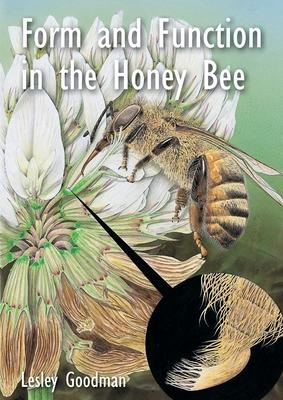
Containing over 340 diagrams, micrographs and colour illustrations, Form and Function works equally well as an expert guide to the physiology and anatomy of the honey bee, and as an introduction to this fascinating field for students and others.
The chapters take the reader through the major structures and activities of the honey bee - the antennae, compound eyes, dorsal ocelli, the bee's response to gravity, feeding, respiration, flight, glands and colony defence are all examined in detail to give the reader a comprehensive understanding of how and why the honey bee behaves as it does.
The book has been completed posthumously by Prof. Richard J Cooter, Chair of the L J Goodman Insect Physiology Trust, and Dr Pamela Munn, Deputy Director of the International Bee Research Association.
Chapters1. The antennal sense organs: smelling, tasting, touching and hearing in the bee2. Vision in the bee: the compound eye3. The dorsal ocelli: the bee's second set of eyes4. The bee's response to gravity: which way is up?5. Feeding: 1. Using the mouthparts2. Tasting the food3. Collecting the pollen6. Respiration: how do bees breathe?7. Flight: wings, aerodynamics, sensory control and metabolism8. Glands: chemical communication and wax production9. Defending the colony: the sting
Containing over 340 diagrams, micrographs and colour illustrations, Form and Function works equally well as an expert guide to the physiology and anatomy of the honey bee, and as an introduction to this fascinating field for students and others.
The chapters take the reader through the major structures and activities of the honey bee - the antennae, compound eyes, dorsal ocelli, the bee's response to gravity, feeding, respiration, flight, glands and colony defence are all examined in detail to give the reader a comprehensive understanding of how and why the honey bee behaves as it does.
The book has been completed posthumously by Prof. Richard J Cooter, Chair of the L J Goodman Insect Physiology Trust, and Dr Pamela Munn, Deputy Director of the International Bee Research Association.
Chapters1. The antennal sense organs: smelling, tasting, touching and hearing in the bee2. Vision in the bee: the compound eye3. The dorsal ocelli: the bee's second set of eyes4. The bee's response to gravity: which way is up?5. Feeding: 1. Using the mouthparts2. Tasting the food3. Collecting the pollen6. Respiration: how do bees breathe?7. Flight: wings, aerodynamics, sensory control and metabolism8. Glands: chemical communication and wax production9. Defending the colony: the sting
Paperback
$50.00